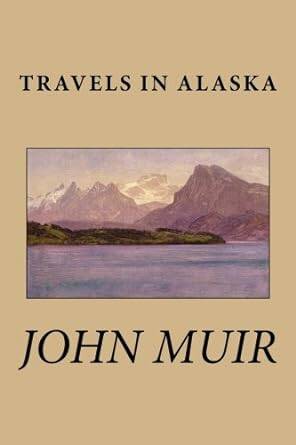Every now and then, quotes about Alaska perfectly formatted for social media will pop up on my Facebook or Instagram feeds. Like a lot of things on the internet, its sometimes hard to tell what’s real and what isn’t, but in recent weeks I’ve seen enough of such quotes attributed to John Muir that I felt compelled to seek out his writing on Alaska.
John Muir is famously known as the poetic “father” of the United States’ National Park system who also co-founded the Sierra Club and served as its first president until his death in 1914. The National Park Service credits Muir as being instrumental to the creation of the Grand Canyon, Mount Rainier, Petrified Forest and Kings Canyon National Parks.
The posthumously published collection of Muir’s observations from time spent in Alaska, called “Travels in Alaska,” is broken into three parts — one for each trip taken in 1879, 1880 and 1890. The chapters cover travels around Southeast, including Wrangell, the Stikine River (which Muir writes as “Stickeen”) and Glacier Bay.
Speaking as someone similarly graced with the opportunity to experience the Alaska landscape for the first time as an adult, Muir beautifully captures the grandeur, beauty and wildness of the environment while also acknowledging that words cannot do the then-territory justice.
“To the lover of pure wildness Alaska is one of the most wonderful countries in the world,” Muir writes early in the book.
Some passages read less like field notes and more like sermons, with Muir frequently invoking themes of religion when trying to accurately communicate the majesty of the landscape.
“Still more impotent are words in telling the peculiar awe one experiences in entering these mansions of the icy North, notwithstanding it is only the natural effect of appreciable manifestation of the presence of God,” Muir writes of a glacier.
A few pages in, I certainly felt as though I’d found a kindred spirit with as much reverence for the natural beauty of Alaska as me.
What consistently brought these magical musings to a grinding halt, though, were Muir’s period-typical condescending, othering and overtly racist comments about the Alaska Native communities he encountered while traveling in Southeast.
Passages that stick out include one where Muir’s party cuts down a Tlingit totem pole, another in which Muir fords a river by riding on the back of an Alaska Native man, and others in which Muir otherwise refers to an Alaska Native person as a “specimen” or comments on tribal members’ “barbarous” ceremonial performances.
One of my favorite video games as a child was Mario Kart, in which players race each other in a Formula 1-style format as Mario characters. Periodically, racers hit mystery cubes that either give you an advantage or a way to slow down the other racers. One such hindrance are squids, called Bloopers, which squirt ink on your windshield and make it harder to stay on course.
Reading Muir’s 1915 “Travels in Alaska” felt a bit like trying to race with ink spots on the windshield. It is mildly inconvenient after the first few splotches, but eventually the cumulative effect is so distracting that it becomes difficult to move forward. Each time I set down “Travels in Alaska,” I found myself reluctant to pick it back up again.
For all the power of Muir’s prose, there is certainly no shortage of texts that similarly capture the splendor of Alaska as evidenced by its physical prowess, but also the rich culture and history of its Indigenous peoples. In fact, equal attention to and respect for both of those things to me feel inseparable for a truly rewarding reading experience and complete understanding of what makes Alaska so special.
I am certainly not the first person to be put off by some of Muir’s views. The Sierra Club in 2020 published an article called “Pulling Down Our Monuments,” which examined the naturalist’s complicated legacy and ties of the organization’s early leaders to such hallmarks of white supremacist ideology as the eugenics movement.
There is, of course, no “right” way to think about such figures as John Muir, but my experience with his writings thus far make me feel sufficiently comfortable putting aside his other works for the time being.
Fortunately, the structure of “Travels in Alaska” is such that it doesn’t need to be read in a specific order. I jumped around a bit, diving into which ever chapters seemed the most interesting (see “Auroras” from “The Trip of 1890”) and still have a few remaining. Given all of the impressions previously discussed, I don’t yet have a clear sense of when I’ll get around to finishing them.
Muir’s “Travels in Alaska” can be read in full on the Sierra Club’s website at vault.sierraclub.org/john_muir_exhibit.
Reach reporter Ashlyn O’Hara at ashlyn.ohara@peninsulaclarion.com. Off the Shelf is a bimonthly literature column written by the staff of the Peninsula Clarion.

